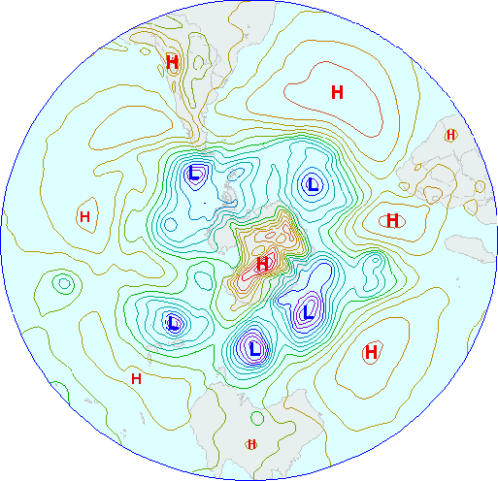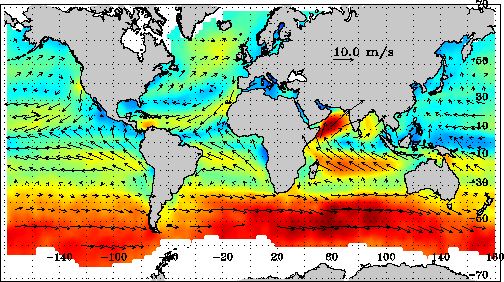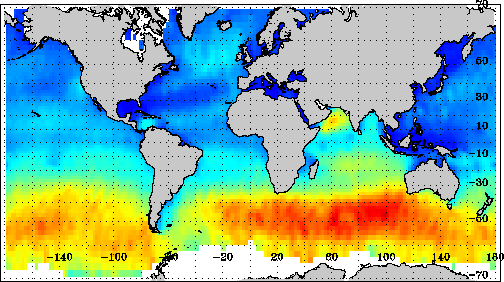The Southern Ocean
Southern Ocean weather
The Southern Ocean is the only ocean where wind, waves and currents can travel right around the world almost unhindered by land. As a result the weather systems behave almost as you would expect from a total "water planet" with polar lows tracking around the Antarctic continent in a never-ending succession.

The Roaring Forties
The prevailing westerly winds that blow from the subtropical highs towards the polar lows are know as "the Roaring Forties". They are stronger and more consistent than the corresponding westerlies in the northern hemisphere and reach their peak in July-August (southern winter).
With average monthly wind speeds of more than 12 m s-1 in the windiest areas These strong and persistent winds can whip up enormous waves. Average monthly wave height in July is over 5 m in the stormiest region south of the Indian Ocean. For 5% of the time waves will be over twice as high as the monthly average.
Winds

Average monthly wind speed for July. The colour shows the wind speed, the arrows give the average direction.
Source: NOC from satellite scatterometer data.



